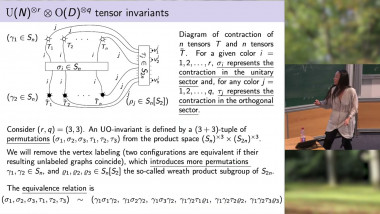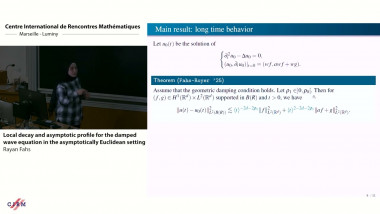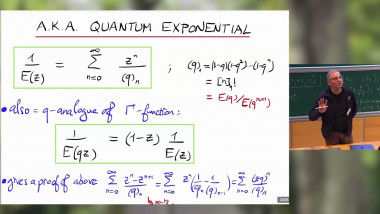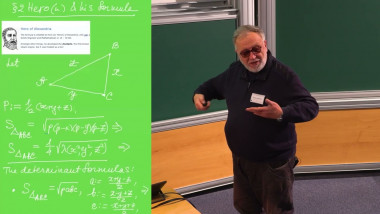Appears in collection : Chaire Jean-Morlet : Equation intégrable aux données initiales aléatoires / Jean-Morlet Chair : Integrable Equation with Random Initial Data
Usually one defines a Tau function Tau(t_1,t_2,...) as a function of a family of times having to obey some equations, like Miwa-Jimbo equations, or Hirota equations.
Here we shall view times as local coordinates in the moduli-space of spectral curves, and define the Tau-function of a spectral curve Tau(S), in an intrinsic way, independent of a choice of coordinates. Deformations are tangent vectors, and the tangent space is isomorphic to the space of cycles (cf Goldman bracket), so that Hamiltonians can be represented by cycles.
All the integrable system formalism can then be represented geometrically in the space of cycles: the Poisson bracket is the intersection, the conserved quantities are periods, Miwa-Jimbo equations and Seiberg-Witten equations are a mere consequence of the definition, Hirota equation is a vanishing monodromy condition, and Virasoro-W constraint are automatically satisfied by our definition, showing that our Tau-function is also a conformal block. Our definition contains KdV, KP multicomponent KP, Hitchin systems, and probably all known classical integrable systems.
















